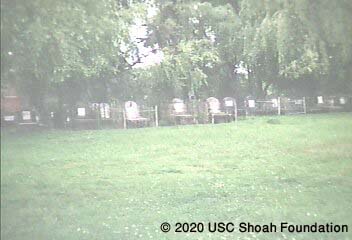

Murder Story of Stanisławów Jews at the Stanisławów Jewish Cemetery

The Jewish cemetery continued to be used as a murder site of Jews, both from Stanisławów itself and from nearby localities, in the period from late 1941 to 1943. Groups of several hundred to several thousand Jews would be brought to the cemetery from the Security Police prison or from the ghetto itself, and would then be shot by German security and order policemen. The last shooting of Jews at this cemetery took place in February 1943, when Stanisławów was declared “free of Jews.”
In early 1944, as part of Aktion 1005, a special squad was brought to Stanisławów to erase all traces of the Nazi crimes in the city. The members of the squad, all of them Jewish, had to exhume the bodies of the murdered Jews at the Stanisławów Jewish cemetery and burn them. After finishing this grisly task, they were all shot dead on the spot.
